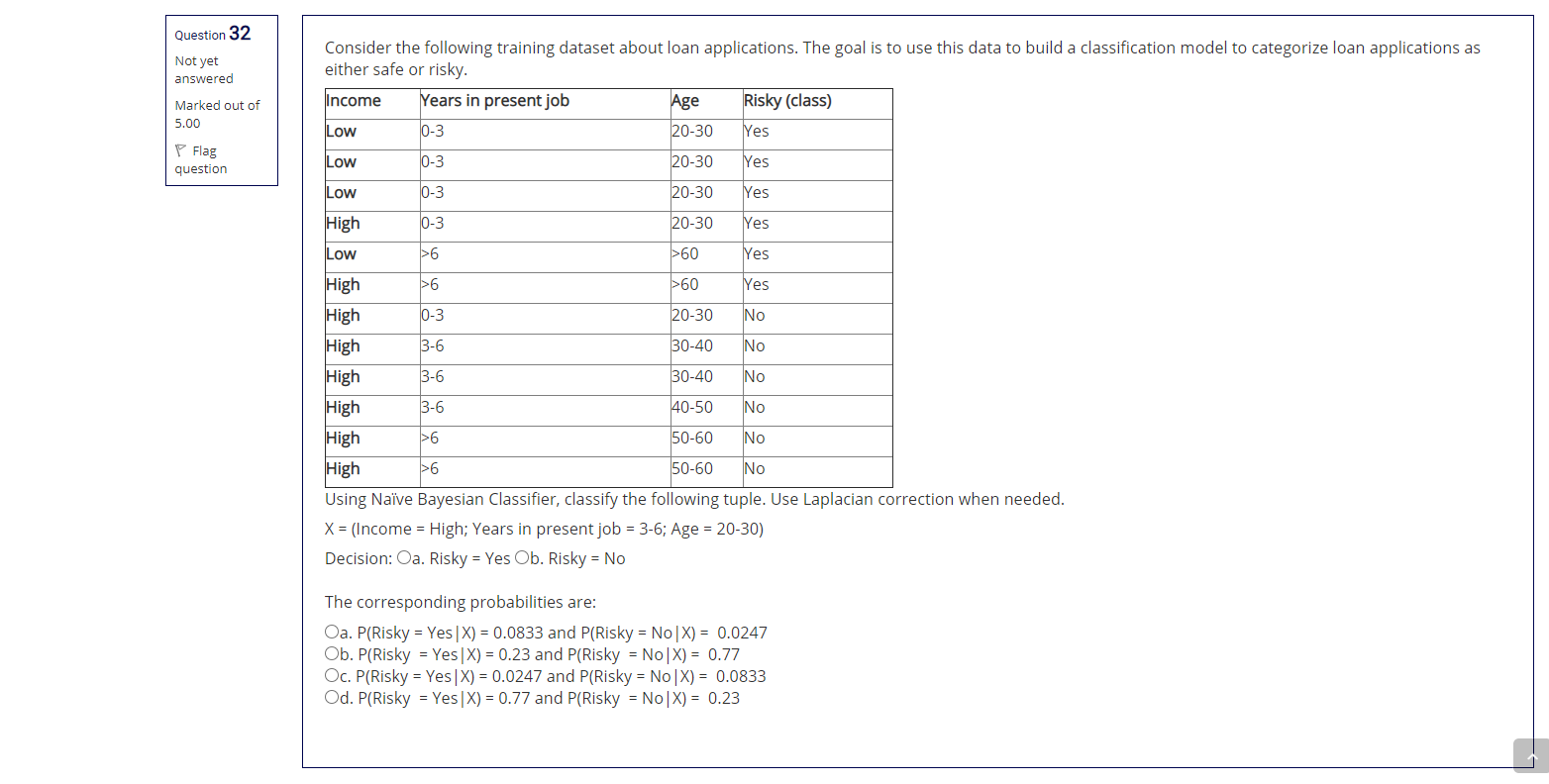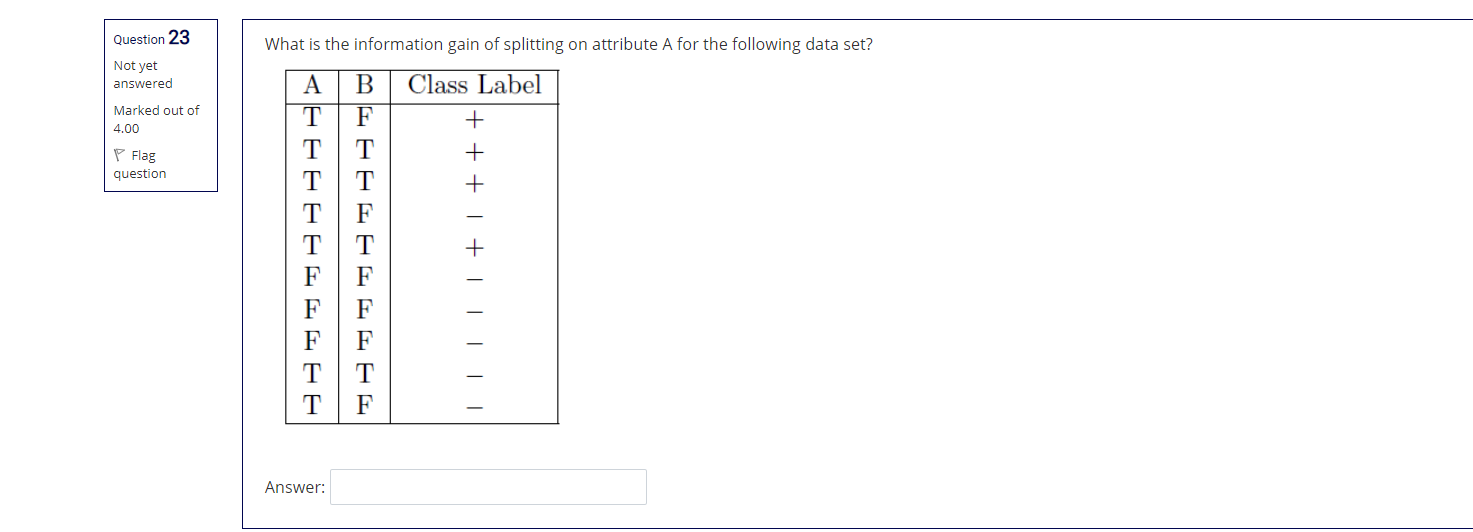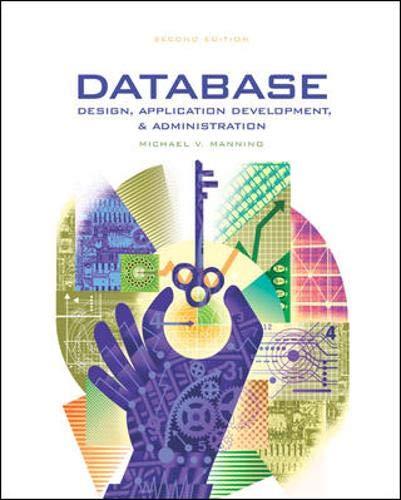



Question 32 Not yet answered Consider the following training dataset about loan applications. The goal is to use this data to build a classification model to categorize loan applications as either safe or risky. Income Years in present job Age Risky (class) Low 0-3 20-30 Yes Marked out of 5.00 P Flag Low 0-3 20-30 Yes question Low 0-3 20-30 Yes | High 0-3 20-30 Yes Low >6 >60 Yes High >6 >60 Yes High 0-3 20-30 INo High 3-6 30-40 High 3-6 30-40 INo High 3-6 40-50 No High >6 50-60 No High >6 50-60 No Using Nave Bayesian Classifier, classify the following tuple. Use Laplacian correction when needed. X = (Income = High; Years in present job = 3-6; Age = 20-30) Decision: Oa. Risky = Yes Ob. Risky = No The corresponding probabilities are: Oa. P(Risky = Yes X) = 0.0833 and P(Risky = No|) = 0.0247 Ob. P(Risky = Yes (X) = 0.23 and P(Risky = No|X) = 0.77 Oc. P(Risky = Yes|X) = 0.0247 and P(Risky = No|X) = 0.0833 Od. P(Risky = Yes (X) = 0.77 and P(Risky = No X) = 0.23 Question 16 Not yet answered Apply the Apriori algorithm on the above transactional database and answer the following questions. The minimum supports is 60% and the minimum confidence (i.e. accuracy) is 80%. Indicate from the below set of strong association rules that are generated. Marked out of 3.00 P Flag question Select one: O a. A->B; D -> A; AD->B O b. D -> A; A->E; D->K O c. A -> B; A->C; D->E Question 23 Not yet answered Marked out of 4.00 Flag question What is the information gain of splitting on attribute A for the following data set? A B Class Label T F + T T + T T T T F F + + + I + LLLL T T F Answer: Question 26 Not yet answered Consider the following data set consisting of the scores of two attributes on each of seven individuals: Objects A1 A2 1 1.0 1.0 Marked out of 4.00 2 1.5 2.0 Flag question 3 3.0 4.0 14 5.0 7.0 15 3.5 5.0 16 4.5 5.0 7 3.5 4.5 Group these objects into 2 clusters after running K- means for 2 iterations. The distance between objects is a Euclidean distance. Select one: O a. Cluster 1: (1, 2,5) Cluster 2: (3, 4, 6, 7) O b. Cluster 1: (1,2) Cluster 2: (3, 4, 5, 6, 7) O c. Cluster 1: (1, 2,4) Cluster 2: (3, 5, 6, 7)










